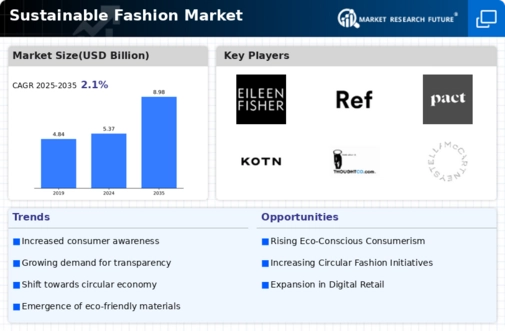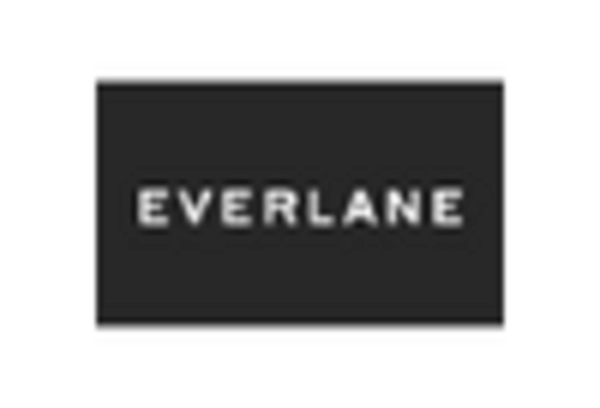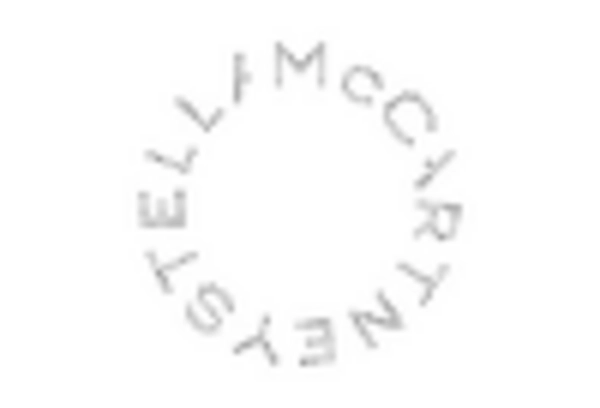Consumer Demand for Ethical Products
The Sustainable Fashion Market experiences a notable surge in consumer demand for ethically produced clothing. As awareness of environmental issues and labor practices increases, consumers are gravitating towards brands that prioritize sustainability. Recent surveys indicate that approximately 70 percent of consumers are willing to pay more for sustainable products, reflecting a shift in purchasing behavior. This trend is particularly pronounced among younger demographics, who are more likely to support brands that align with their values. Consequently, companies within the Sustainable Fashion Market are adapting their strategies to meet this demand, often incorporating sustainable materials and ethical labor practices into their production processes. This shift not only enhances brand loyalty but also positions companies favorably in a competitive market, as consumers increasingly seek transparency and accountability from their favorite brands.
Rise of Second-Hand and Rental Markets
The Sustainable Fashion Market is witnessing a significant rise in second-hand and rental markets, reflecting a shift in consumer attitudes towards ownership and sustainability. Platforms that facilitate the buying, selling, and renting of pre-owned clothing are gaining traction, appealing to environmentally conscious consumers who seek to reduce waste. Recent data suggests that the second-hand clothing market is projected to reach a valuation of over 64 billion dollars by 2024, indicating a robust growth trajectory. This trend not only promotes sustainability by extending the lifecycle of garments but also offers consumers affordable alternatives to fast fashion. As more individuals embrace the concept of circular fashion, the Sustainable Fashion Market is likely to evolve, with brands increasingly incorporating second-hand and rental options into their business models.
Influence of Social Media and Influencers
The Sustainable Fashion Market is significantly influenced by social media and the rise of influencers advocating for sustainable practices. Platforms like Instagram and TikTok have become vital channels for promoting sustainable fashion, as influencers showcase eco-friendly brands and educate their followers about the importance of sustainability. This digital landscape allows for rapid dissemination of information, creating a community of consumers who prioritize ethical fashion choices. As influencers often have substantial reach, their endorsements can lead to increased visibility for sustainable brands, driving sales and brand loyalty. Moreover, the engagement generated through social media campaigns can foster a sense of community among consumers, further solidifying the Sustainable Fashion Market's position in the broader fashion landscape.
Regulatory Support for Sustainable Practices
The Sustainable Fashion Market benefits from increasing regulatory support aimed at promoting sustainable practices. Governments are implementing policies that encourage eco-friendly production methods and penalize environmentally harmful practices. For instance, several countries have introduced incentives for companies that adopt sustainable practices, such as tax breaks or grants for using renewable materials. This regulatory environment fosters innovation within the Sustainable Fashion Market, as brands seek to comply with new standards while also appealing to environmentally conscious consumers. Furthermore, as regulations tighten, companies that proactively adopt sustainable practices may gain a competitive edge, positioning themselves as leaders in the market. This trend suggests a future where sustainability is not just a choice but a requirement for success in the fashion industry.
Technological Advancements in Sustainable Production
Technological advancements play a crucial role in shaping the Sustainable Fashion Market. Innovations in textile production, such as 3D printing and biofabrication, are revolutionizing how clothing is made. These technologies not only reduce waste but also allow for more efficient use of resources. For example, 3D printing can minimize fabric waste by producing garments layer by layer, while biofabrication utilizes organic materials to create textiles. As these technologies become more accessible, they are likely to drive down costs and increase the scalability of sustainable practices. This evolution in production methods may lead to a broader acceptance of sustainable fashion, as brands can offer eco-friendly products at competitive prices. Consequently, the Sustainable Fashion Market stands to benefit from these advancements, potentially attracting a wider consumer base.

















Leave a Comment